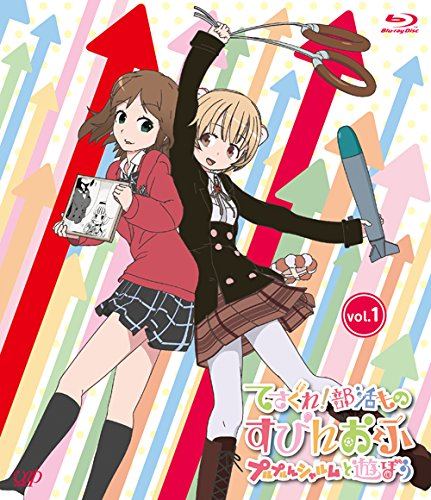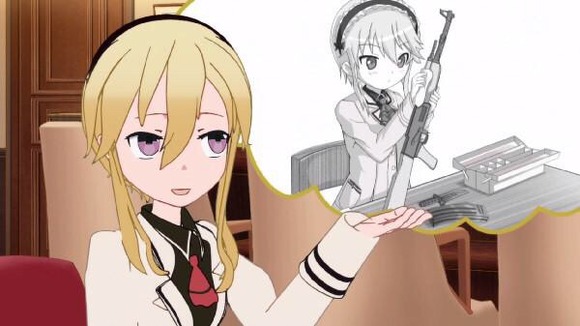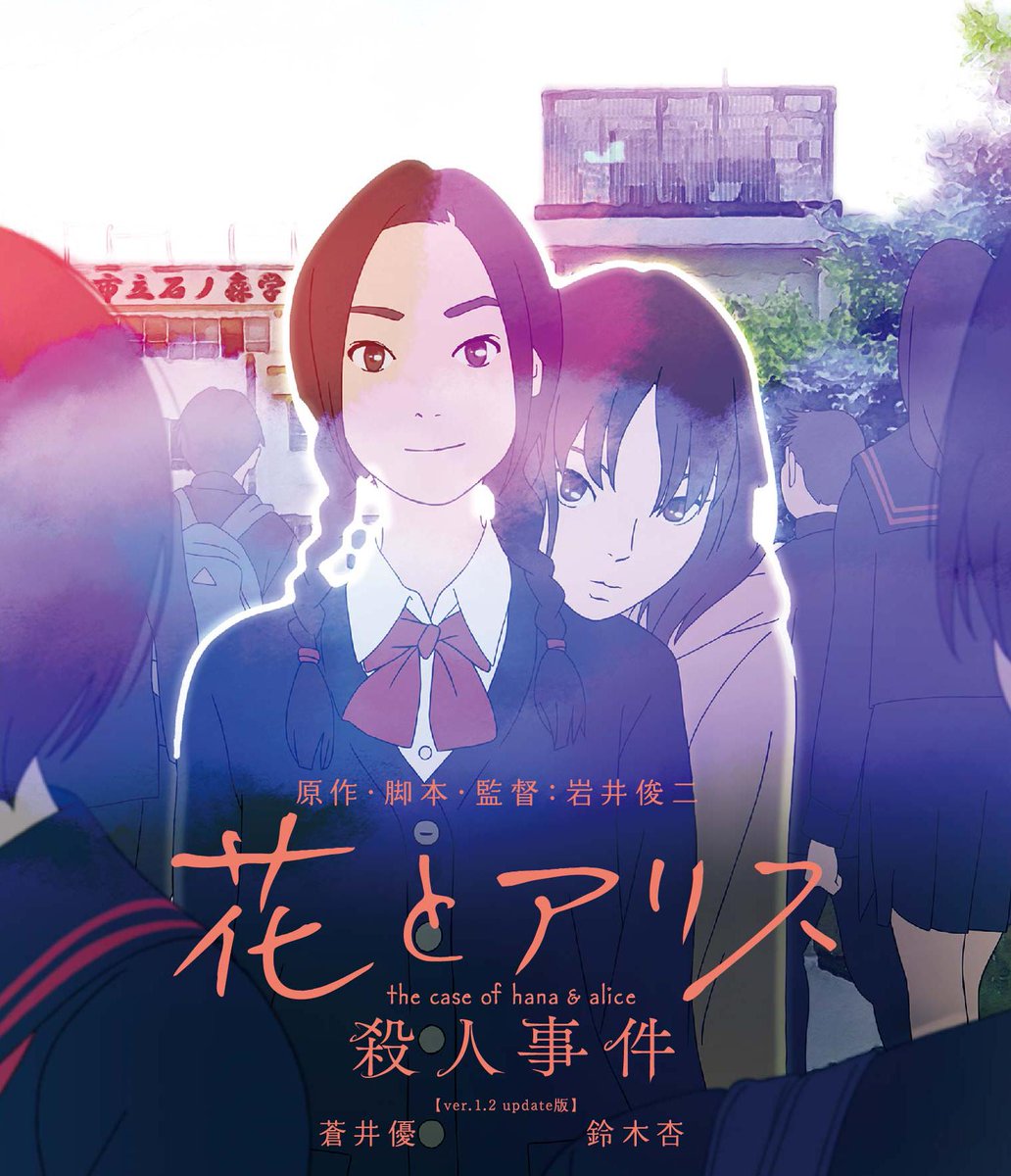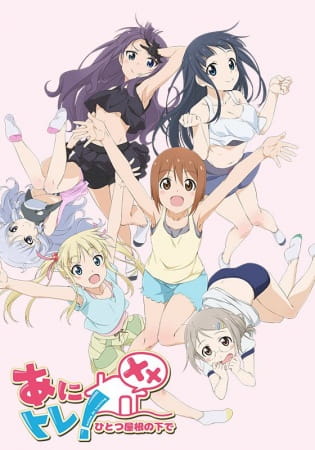Director: Michael Arias
Screenplay: Anthony Weintraub
Based on the manga by Taiyō
Matsumoto
Voice Cast: Kazunari Ninomiya as
Kuro (Black); Yū Aoi as Shiro (White); Yūsuke Iseya as Kimura; Kankurō Kudō as Sawada;
Min Tanaka as Suzuki; Rokurō Naya as Gramps; Tomomichi Nishimura as Fujimura; Mugihito
as The Boss; Nao Ōmori as Choco; Yoshinori Okada as Vanilla; Yukiko Tamaki as Dawn;
Mayumi Yamaguchi as Dusk; Masahiro Motoki as Snake
Viewed in Japanese with English Subtitles
Tekkonkinkreet stands out in the Japanese animation industry as the
first theatrical feature directed by a non-Japanese creator. Michael Arias, originally from the
United Kingdom, had a long career before he even got to animation such as
visual and digital effects in cinema, and developing and patenting Toon
Shaders, rendering software to allow the integration of computer graphics
imagery with cel animation, which has been used even in productions like Studio Ghibli's Princess Mononoke (1997). Here, Arias
makes an important historical note as the first non-Japanese director of an
anime project, adapting this adaptation of a Taiyō Matsumoto project with Studio
4°C.
Tekkonkinkreet is set in Treasure Town, an amalgamation of periods
which I suspect is as much influenced by the period after World War II,
considering a huge plot point being drastic redevelopment including an
amusement park replacing slums and strip joints, feeling less like the bubble
period of the eighties, and a scene where real film posters are decorating the
wall, mostly yakuza and crime films which would've predominantly be popular
between the fifties to the seventies at the latest. Personally this feels like
one of the sixties yakuza films of the "Mukokuseki" (stateless) era
from the likes of Nikkatsu studios,
where the yakuza try to take over with a divide between the modern world and a
creepy cold blooded figure named Snake, and the old honourable guard, with a super
powered boy named Kuro (Black) in the middle in the way of development whilst
he protects a child-like boy named Shiro (White).
This being a Studio 4°C production means this is a very idiosyncratic looking
work. I cannot really pinpoint what their trademarks are, even if you ignore
the Masaaki Yuasa productions, aside
from the fact they have always taken risks in distinct animation and exploring
unique artistic styles, sustained in commissioned work like music videos. Their
work is always artistically bold, taking experimental risks and this action
drama immediately shows the talent behind the production when it opens up with
characters chasing each other on moving traffic, float in the air after taking
leaps off buildings, and the world itself being utterly alien to our own, from
its general timelessness to bars the size of cubes having giant eyes on the
wallpaper. The designs are also interesting in how manga author Taiyō Matsumoto is very distinctive,
exaggerated but with touches of greater realism in his character designs. This
is possibly paradoxical but with a sense that when characters are meant to
stand out, like the mysterious foreign assassins Snake hires to kill Black who
act like aliens, they do; in contrast others such as the wife of Kimura, a
yakuza who slowly starts to question his support of Snake especially when he
learns he will soon become a father, look far more realistic in context of a
lot of anime being very exaggerated already.
The world is openly exaggerated
with this clash in tones intention, especially as this is indeed a world of the
openly unnatural where super minions can fly and Kuro's spiritual side includes
"The Minotaur", an evil side to himself hidden inside. Tekkonkinkreet
is surprisingly dark; the world is kinetic, with incredibly animation and a
score by British electronic duo Plaid
having a pop electronic buzz to it, but the film's a melancholic tale where
change is inevitable to Treasure Town with no way back. Kuro is all anger and
passion, whilst Shiro is a rare case of a character who is child-like who isn't
annoying, who acts like he is five and likes things like his collection of
weird hats, but is someone with moments of supreme wisdom with the tale
continuing to the point it clearly shows he is Black's sanity in literal form.
The finale act is literally a subconscious struggle in influence as Kuro by
this point is insane, staggering around the town as a pure beast of violence,
leading to most surreal and enigmatic sequences.
I did initially consider Tekkonkinkreet to probably a flawed
film, but with time having passed, it is yet become a spectacular debut that I
cannot really suggest any major flaw with, a rush of energy and imagination
which does touch on some real emotion. Its darker, grimmer moments stand out,
but there's also the subplot of an older gangster who believes in honour and
finds the changes to the town utterly alienation, the conclusion where Kimura
is forced to finally deal with him played with the male angst of a yakuza film
fully and heartfelt. It is a gem, one that also had the benefit of a wider
audience beyond anime circles as in the 2000s, when anime was a big trend, Sony Pictures Entertainment released
this alongside Satoshi Kon's Paprika (2006) on DVD and Blu-Ray,
which means that Tekkonkinkreet was
probably more heavily advertised and available for people to stumble across
this medium. Certainly, this is a good thing for this production. In terms of Arias' own career, he's been slow but
has made more work in the medium, with the added knowledge that his cel shading
software innovations would've been enough to provide a huge impact on animation
in general beyond just Japan. With this film under his belt, he has an additional
success, whilst Studio 4°C, who were
more than likely helped by this film's accessibility alongside their growing
cult audience, would just stand out as a cool and idiosyncratic company still.










